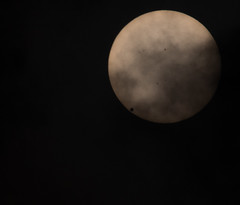The Olympus C-8080WZ “prosumer” digital camera was released in 2004 and totally changed my approach to photography and taught me some valuable lessons of digital technology.
some of my photos with the C-8080WZ:
I am writing this blog in mid 2008 because Olympus and Panasonic have just announced their new Four Thirds Micro system which may create some very innovative products but these are likely to be evolutions of the technology of the C-8080WZ albeit with much advanced functionality and hopefully overcoming the C-8080’s shortcomings.
The C-8080 was arguably the best 8 megapixel prosumer camera of 2004-2005 with one of the best lenses ever seen on a non-dSLR prosumer digital camera.
I used it as my main travel camera to France (see my photos of France in 2005 here) where I was able to take night time photos of Paris from the top of the Eiffel Tower with the camera OUTSIDE the wire fence and I was able to compose and focus using the flip out live LCD, something I could not have achieved other than by luck using the dSLRs of the day:
I even managed to get a reasonable photo of a very dim comet LINEAR T7 in a region affected by light pollution, by using a teleconverter adapter on it and attaching it to a motor driven telescope mount:
I still have my C-8080 but for 99% of my photography, I now use digital SLRs and I reserve the C8080 for when I need silent photography and/or movie mode such as at my daughter’s cello concerts.
As good as dSLRs are, they are still audibly noisy mainly due to their mirror moving out of the way for the exposure.
The Four Thirds Micro system promises to change that as it does not have a mirror but will function more like the C-8080 but with interchangeable lenses.
I loved my C-8080, it was so versatile and with such good image quality for a prosumer as long as you used it appropriately (eg. at ISO 50-100 and for relatively short exposures), that I fell in love with photography again after all my film years and their frustrations.
I even used it to start exploring digital infrared photography although the lens was not optimised for IR light and tended to give a central hot spot as do many dSLR lenses.
BUT there was also several big frustrations with the C-8080:
- the very slow RAW file write time of 13secs per image
- the inability to visualise the image during this write time
- an AF system that had major problems focusing on low contrast subjects, in particular, faces – it would always seem to prefer to focus on a more contrasty background than on my subject’s eyes
- even worse, was the poor manual focus override capability, in particular, the difficulty in determining when a subject was in focus using manual focus
- the relatively small LCD, although of “normal” size for the time
- dodgy stepped zoom function operated by a lever on the camera
Even worse was the realisation that a lot of money was paid for this camera and its wonderful lens, and yet, in only two years or so, the rapid growth in technology would make the camera body relatively redundant and practically worthless, along with the lens.
Despite their wait in hope, Olympus C-8080 fans hoping for an upgrade to address its shortcomings were disappointed that Olympus seemed to put its energies instead into either dSLRs (although this was a great thing to do) and cheaper styled non-dSLRs. Now their wishes may be partly realised with the Micro system.
So how do these lessons apply to the new Four Thirds Micro system?
Well firstly, it separates your investment into camera bodies which depreciate rapidly (often within 3 years), from lenses which should remain functional for many years to come as long as the camera system remains available and updated. This is great news, because as serious photographers, we value our lenses and hopefully we will buy the best we can afford and now we can hope they will grow with our technology.
Secondly, with the new technological advances, many of the C8080’s shortcomings have been overcome or can be expected to be overcome such as:
- slow RAW write time – this is now a non-issue
- image noise – using the much larger sensor of the Four Thirds, image noise has been dramatically reduced, and can be expected to further be reduced as technology improves
- manual focus accuracy – this has already been much improved in the magnified Live Preview modes of current dSLRs and this technology can be expected to be applied to the new cameras
- dodgy zoom function – zoom will now be available on the lens itself, although I suspect some Micro system lenses may allow zoom to be controlled via the camera
- small LCD – LCDs are now averaging about 3″ in size and we could expect high resolution as with Nikon dSLR LCDs
But there are a few areas that still need to be proved to be solved:
- I suspect, we will need to use new 11 pin lenses instead of current 9 pin lenses to achieve optimum speed with this contrast detection AF
- OGAWA: “Practical use of liveview has been considerably improved with the E-420, and if we continue improving that system, we anticipate it will be possible to use it at a level without significant problems. Technical development continues to advance. However, if one asks whether it is currently on a level with current SLRs, it’s not there yet, no. We want to develop M4/3 over a long span of time, so please take things on a bit more of a long-term view.”
It will be interesting times indeed as new camera bodies and Micro system lenses are rolled out, and hopefully providing us with relatively cheap bodies which we can afford to depreciate rapidly, whilst giving us new possibilities of interchangeable lens photography as mentioned in my previous blog of the new Four Thirds Micro system
The new Micro system is destined to mothball my C-8080 for good, such is life for digital cameras.














Wow, I never thought of it this way, well done Gary